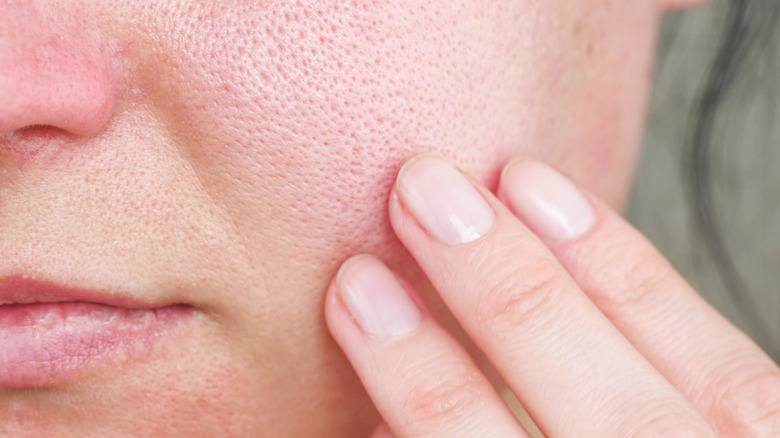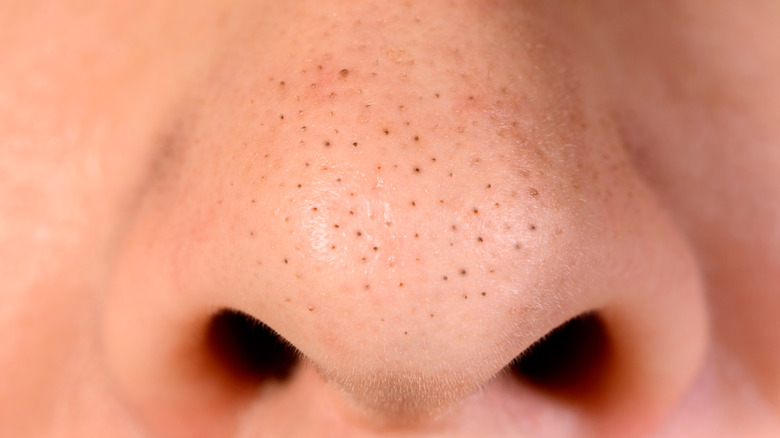The Real Difference Between Blackheads And Sebaceous Filaments
If you don't know what a sebaceous filament is, let us fill you in. While sebaceous filaments might look like they're blocking your pores, they're not. In fact, they're actually serving a pretty important function. As Dr. Brendan Camp explained to Byrdie, sebaceous filaments are pores that are loaded with oil and look like dark dots on your skin. He said that everyone has sebaceous filaments, which "help guide ... oil from your sebaceous glands ... to the surface of your skin where the oil can get to work fighting environmental aggressors and dehydration."
Esthetician Renee Rouleau explained to the outlet that not everyone has visible sebaceous filaments. If you can see them, it's due to an "overproduction" of oil which "can build up and start to harden until it eventually stretches the pore and starts to 'spill out.'" The darker color of these sebaceous filaments means they're sometimes mistaken for blackheads, which could lead to you trying to pop them. Sebaceous filaments aren't pimples, though, and, while you can drain your pores, they'll fill right back up in a matter of weeks.
So how can you tell the difference between a blackhead and a sebaceous filament? For starters, sebaceous filaments typically line your t-zone. If you see a telltale black spot on the side of your face, it's probably a blackhead.
Sebaceous filaments aren't as dark as blackheads
According to the website of SLMD Skincare by Sandra Lee M.D., AKA celebrity dermatologist Dr. Pimple Popper, sebaceous filaments are typically lighter than blackheads. A blackhead is, well, black, while a sebaceous filament will have less pigmentation and be "more of a light grey or tan."
Knowing the difference between a blackhead and a sebaceous filament is all well and good, but it could be bad news if you're plagued by visible sebaceous filaments and were hoping an acne-treating regiment would make them go away. Is there anything that can be done about sebaceous filaments?
We've already explained that squeezing or popping sebaceous filaments is a pointless endeavor since they'll quickly fill back in, but you can minimize their appearance. As facialist Yolanda Mata told Byrdie, "keeping the skin clean through cleansing twice daily" is the most important thing you can do "to avoid inflammation and minimize their appearance on the skin's surface." Clarifying masks, supplements, facials, exfoliating, and retinol can also help if you're self-conscious about your visible sebaceous filaments.

